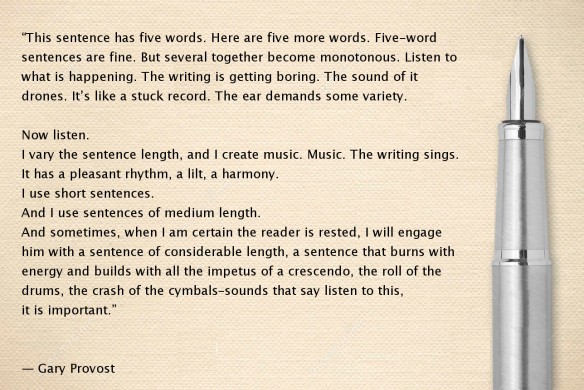
Category Archives: English Language
Sample Language Analysis and Commentary
“Language is the dress of thought.” —-Samuel Johnson
Here’s a dress for thought: Viktor and Rolf bring a new interpretation to an old masterpiece. You can check out their exhibition at the NGV this summer.
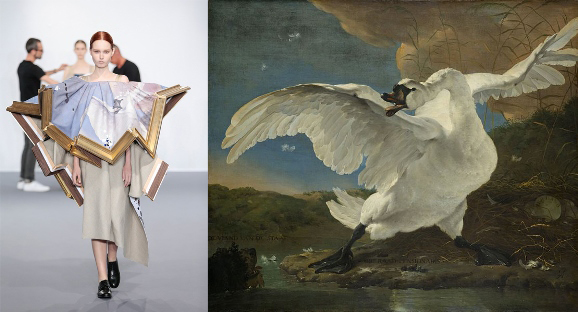
- Viktor and Rolf: Wearable Art (Couture Fall/Wintor 2015-16), images based on Dutch Golden Age paintings of the 17th century, such as ‘The Threatened Swan’ by Jan Asselijn, 1650 (Rijksmuseum)
Not to your taste? It’s conceptual, brother.
Speaking of conceptual, remember that this task is all about discovering and explaining how writers present things through their choice of language in order to influence the audience (make them feel, think or act in a particular way) to in turn persuade them to accept their point of view.
Keep this concept in your head and you should not be phased by this section of the exam.
By now, you will have read Vyom Sharma’s comment piece in The Age dealing with gambling.
Now read the sample-language-analysis-and-commentary-on-gambling-comment-piece , which I wrote. You will not be given an article so long nor be expected to write so much in the 25 minutes you are required to spend on this task in the exam, however it should give you an idea of the nature of the task and of the kind of things you should find and comment on: the process and results of analysis.
Not sure of the process (how to get there)? Check back to the table related to the gambling article. You will find the process pretty clearly stepped out there.
Language structures: exam prep
Language structures – know what they are and how they work. Use the links to access short videos which will remind you of these aspects of language. Use your Year 9 text book to revise their application and also noredink.com.
You should revise the following:
- adverbs
- adjectives
- conjunctions
- prepositions
- verbs
- subject/verb/object
- clauses (dependent/independent)
- phrases
- sentence structures (simple, compound, complex, compound-complex)
- sentence types (declarative, interrogative, imperative, exclamatory)
Remember the process for identifying sentence structures:
- Is it a phrase or clause? (a clause needs a subject and verb)
- If C then I or D? (if it’s a clause then is it independent or dependent)
If you are looking to brush up on your grammar, you can go to noredink or use Grammar Bytes!
Sentence Structures
Watch the following video to brush up on the basic building blocks of the English language: sentences. This is a very simple introduction to the first three types of sentences.
You will need to be able to identify:
- Simple sentences
- Compound sentences
- Complex sentences
- Compound-complex sentences
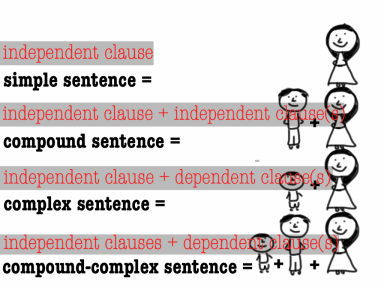
This neat (though heteronormative) graphic gives you a way of visualising the relationship between clauses. If you think of clauses as being independents (like your parents) and the dependents (like you, kiddo) then you will know how the parents can stand alone (simple sentence) or side-by-side (compound sentence) and that, when they have a kid in tow the kid is less important (bear with me!) and can’t survive in the world by itself.
For a more thorough look at all four sentence types in action, watch the following video . Note that it makes reference to the coordinating conjunctions (for, and, nor, but, or, yet, so = FANBOYS).
Grammar Bytes! is a great website presenting easily digestible information about each grammar element and it includes self-test exercises on sentence structures and errors, such as run-on sentences or sentence fragments.
If you need to brush up on the following points of grammar, you can easily log in to the self-testing site NoRedInk and complete some drills to get immediate feedback on your proficiency.
Sentence Types
Watch a relaxing clip introducing the four sentence types and you’ll go far in English Language, my friend.

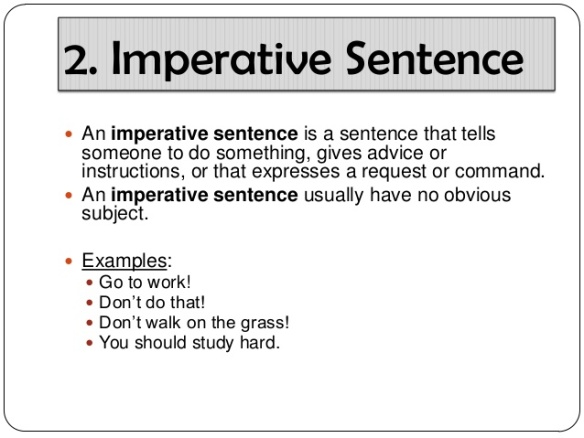
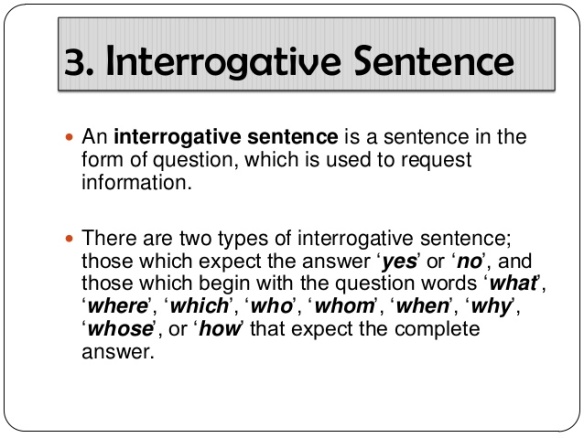
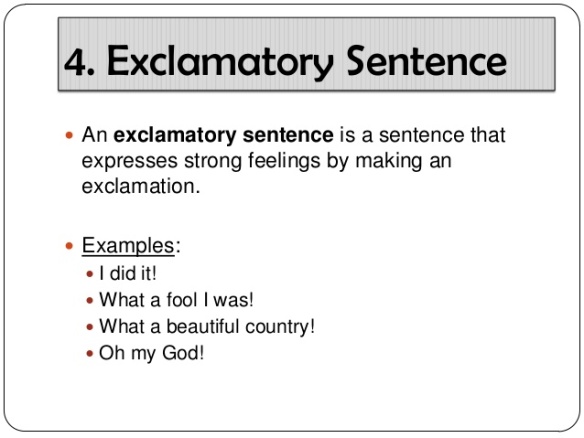
Nature and Function of English Language: an introduction

Watch a bit of Fry and Laurie as they riff on the idea of the English language. If you want to get a sense of how we got to the English we have today, watch The History of English in Ten Minutes.
We will be looking at:
- the major functions language serves
- the role of language in thought processes and social and cultural understandings
- the primary modes of language: spoken, written and signed
- language as a highly elaborate system of signs and conventions
What are the major functions of language?
There are so many but here are a few…
EMOTIONAL EXPRESSION
SOCIAL INTERACTION
RECORDING THE FACTS
INSTRUMENT OF THOUGHT
EXPRESSION OF IDENTITY
LANGUAGE FOR FUN
How have you used language today since the time you woke up? For each of the spoken and written modes, list a range of functions.
Ever heard the theory that texting is bad for your English skills? Listen to Professor David Crystal, renowned linguist defend texting. He explains how each time we use language it is for a purpose.
Wu-Tang Clan & Will.i.amb Shakepeare
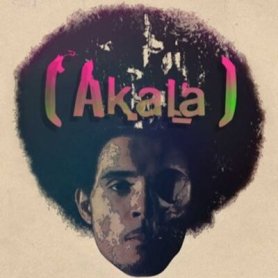
Ever get the sneaky feeling that Shakespeare would be doing hip hop if he were alive today? Rapper Akala brings hip hop and Shakespeare together. Listen to his Comedy, History, Tragedy to get a flava of his work (see what I did there?).
One of the founders of the Hip Hop Shakespeare Company, Akala explores the connections between Shakespeare and hip hop, and tests his audience to see if they can recognise lines from rappers from lines from Shakespeare. The results are surprising…
He goes on to argue that hip hop’s founders and artists like the Wu-Tang Clan see themselves as ‘custodians of knowledge’ in the same way that William Shakespeare was in his day – their work sharing the same celebration of audacious intelligence.
Drop a beat.
